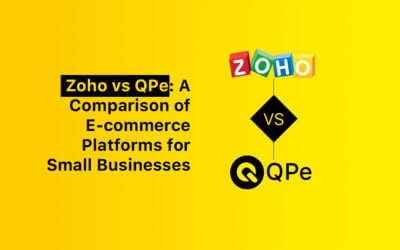Not only brand identity helps businesses develop a long-term relationship with their customers, but it is also the best way to find new customers, increase sales and enhance repeat business. If you’re a business owner, you need to follow solid branding strategies to build your ecommerce brand identity. Keep reading to find out.
What is brand identity?
“Brand identity is the collection of all elements that a company creates to portray the right image to its consumer.”
Everything like products, services, and individuals that create their own unique identity is perceived as a brand by its audience. At its core, that’s what brand identity is – the cumulative efforts to communicate a business niche.
Why building eCommerce brand identity is important?
Ecommerce is a thriving industry, with global (retail-ecommerce) sales reaching over $4.9 trillion in 2021, thus paying attention to building brand identity is essential for its continued success and growth.
In fact, Statistia estimates that $996,956 is spent online each minute.
That’s a whopping figure!
The aspects of brand identity in ecommerce have acquired importance and with access to digital mediums, any kind of business can voice their niche and reach out to a wider audience. Because, when you become intentional about your niche, you control how to market your brand, which allows you to manage your actions and choices to build credibility and trustworthiness.
It’s amazing to see how ecommerce has been growing rapidly in recent years, and many businesses have been quick to take advantage of this trend of building brand identity by establishing and improving their online presence.
The problem with eCommerce branding is that you’ll likely be starting your business in an industry that’s already full of competitors. But with so much competition in the industry, how can you stand out and create a ecommerce brand identity that truly reflects your business niche?
To cut into your industry, you need to define values, products, and selling points that separate you from that crowd. You also need to keep up with the latest e-commerce trends. It gives you the ability to understand the industry and to adapt to the changing needs of your business.
In this article, we will explore the steps you can take to build a brand identity that resonates with your audience and helps you achieve success and growth.
8 effective Steps to build eCommerce brand identity
- Define Your Brand
- Establish Values and Identity
- Identify Your Target Audience
- Research Your Competitors
- Identify Your Vision and Mission
- Prioritize Customer Experience
- Have a Robust Marketing Strategy
- Consistency Across All Channels
Below we are explaining 8 steps to pull off effective strategies to create a strong eCommerce brand identity.
Define Your Brand
Deciding on how you want to portray your brand is first step to build a brand’s identity. It’s important to clearly define your brand’s values, personality, and target audience.
What is your mission? What is your vision?
Define your brand by preparing a list of adjectives that describe your brand’s identity. Try to think in a way as if it were a person. What are your offerings that other shops don’t? What are your strong points?
Furthermore, you can define Your logo style.
As the first thing your customers will notice and remember, your visual identity is an essential part of your brand identification. Your brand’s personality and ideals should be reflected in your logo, colour scheme, and typography.
Think about how do you want to design your business logo? What values do you want to show through a logo? You can get all of those ideas and create some graphic design for your logo, define your colours, images, message, and your corporate typography. If you are a creative head you design your company’s logo by your own with free logo makers.
Also Read: Best Logo design trends in 2023
Establish Values and Identity
The benefit of establishing your brand value and identity is that you will come to know what people think about your brand. You can apply some ways to consider how you are different from other brands in your space. Describes what the organization does, its unique value, and its differentiation. Define the specific personality traits the organization wants to be known for.
The first one is by knowing about your product designs. Are they different from other similar products? Is there any price difference? How do you solve a customer query a little bit differently? These are just a few small ways you may be able to position your brand up for long-term success.
Common elements of brand identity include: a logo, creating a website, product packaging etc.
Also Read: Product Packaging: An Ultimate Guide
Identify Your Target Audience
After defining your brand, it’s now time to identify your target audience. In fact, it all starts with it. Defining your target audience is the best approach to make it clear to which audience your product is directed.
To start with the branding strategies, it is crucial to know who your customer is. All steps of your branding will revolve around your customers who are buying your products. Your customers serve as the base of a successful e-commerce branding strategy.
By reaching them on the right platforms with the right website or online store will help you create a successful branding strategy.
Research Your Competitors
Market research helps you find customers for your business and competitive analysis helps you make your business unique.
This may sound basic, but if you don’t know who you are up against, how will you know how to outperform them? It is basically a process that specialises in the collection and analysis of information about rivals in the marketplace. According to research, the best way to gather information about your competitors is by acting like one of their customers. Sign up for their email list so you can get an idea of how they communicate. Also, follow their blog and social media accounts and watch how they interact with their customers online.
Identify Your Vision and Mission
Establish a vision If you want to create a successful brand identity. But beyond that, analyze what is the impact of your existing vision that you have? Then analyzes what you are looking to achieve besides profits? Your business vision will serve as the direction that you set for the future of your company. It will help you make your future business decisions.
Consider making your vision statements as similar to some of the biggest eCommerce luxury brands such as Nike’s vision is to create a distinctive and authenticated brand; Amazon’s vision is to become a customer-centric online shopping brand.
Along with that, you need to build your mission. A mission gives your brand a reason or purpose for existing in the market. What does your brand stand for? What do you want to make your products look like in the future? The mission statement for your brand should bring some inspiration and innovation to every customer in the world.
For example, Amazon’s mission is to make online shopping more convenient for customers. And Apple aims to bring the best user experience to its customers through innovative smartphones, gadgets, and accessories.
Prioritize Customer Experience
This is a game-changing aspect of building an eCommerce brand identity strategy.
First and foremost, thriving brands always make sure that customers are satisfied with every interaction. It’s the secret ingredient that can take your brand to new heights. To get started, prioritize delivering exceptional service at every customer interaction. It’s like making a promise to yourself that you’ll go above and beyond.
Moreover, when customers reach out with questions or concerns, make it a top priority to respond promptly. Show them that their time is valuable to you and that you’re committed to providing a positive experience. It’s all about being there for them when they need you.
Then there’s accessibility. Ensure your customer service channels, whether phone support, email, or live chat, are easily accessible and responsive.
Remember on the flip side, a negative customer experience is a great way to lose a customer for life. So bring attention to your customer service, because it is very important.
Have a Robust Marketing Strategy
As a part of e-commerce branding, social media marketing can be a powerful way to differentiate yourself in a crowded market and connect with your audience on a deeper level.
Another powerful eCommerce branding strategy that can take your business to the next level is email marketing. It’s like having a direct line of communication to nurture customer relationships and keep that connection alive.
A successful email campaign starts with personalisation and targeting. You can send tailored emails that hit the bullseye by leveraging customer data and segmentation.
But here’s the catch: to make the most of social media marketing, you need a solid strategy that aligns with your brand identity and sparks meaningful interaction. So, start by identifying the platforms where your target audience hangs out: Facebook, Instagram, Twitter, or LinkedIn. Then, reach that right audience and watch your brand soar!
Related: Easy and Proven Marketing strategy for Ecommerce business
These were the most effective strategies to build a brand identity in eCommerce world. If you want proof of the power of e-commerce branding, consider taking a look at the case studies of many popular brands which are still dominating the market.
Visit the link, if you have not paid attention to our brand building guide with examples in previous article.
FINAL THOUGHTS
There has never been a better time for e-commerce brand building. Thanks to the internet and technology, the barriers to entry to branding are practically non-existent. Anyone can build a brand identity, and create products and services to sell to their audience. A strong eCommerce brand building can make it easier for you to monetise your business and achieve your goals.
However, it’s equally critical to craft your ecommerce business strategically that helps advance your sales and growth.
A fast-loading ecommerce platform is crucial as 53 percent of mobile users will abandon a website if it takes more than three seconds to load. It is also a great way to set your business apart in your field, expand your reach, and attract new opportunities. But where do you start?
The emerging e-commerce platform QPe is best place to start a business. You can easily create an online store which is both compatible with modern ecommerce solutions and social media marketing.
Having a firm grasp of who you want to be as a brand will make your decision-making and choices more consistent and in line with your values. Happy branding!



